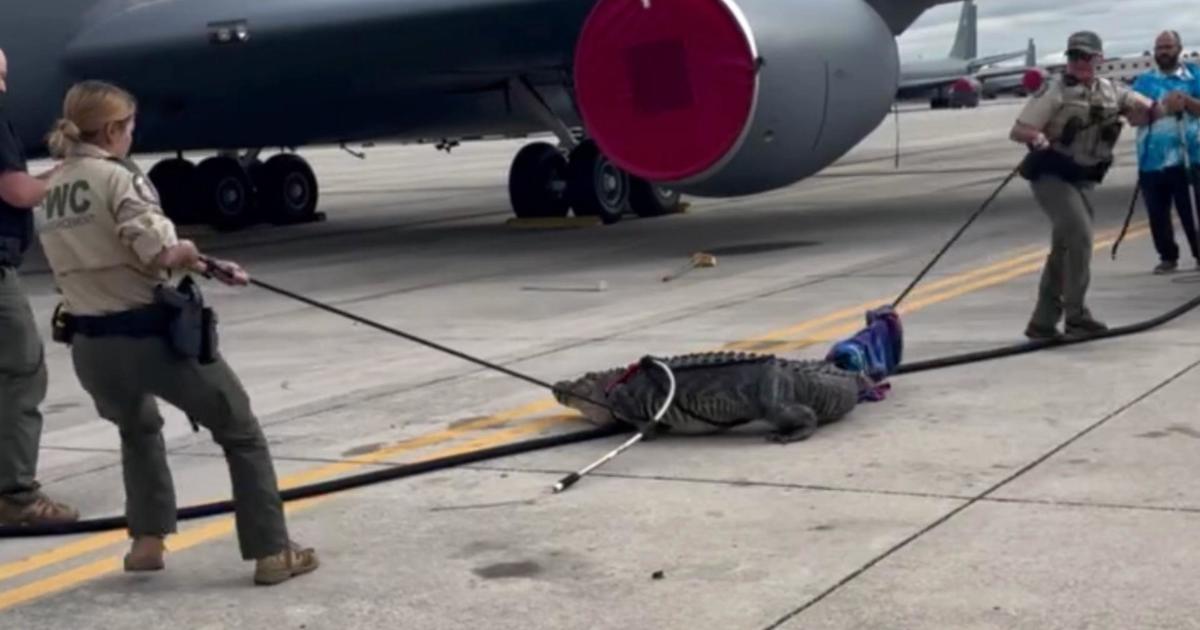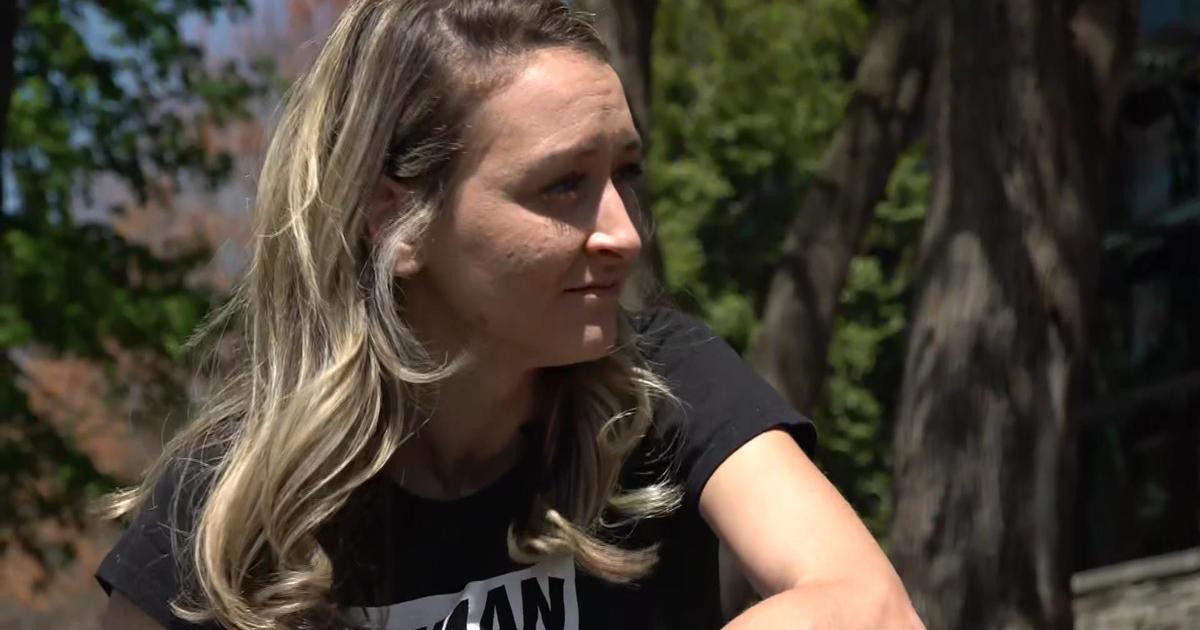The Nightmare Scenario; Inside Instagram; Disappearing Down's; Risky Business -- "CBSN: On Assignment"
"CBSN: On Assignment" airs Mondays at 10 p.m. ET/PT on CBS and on our streaming network CBSN.
The Nightmare Scenario
As North Korea's Kim Jong Un continues his relentless quest for a nuclear weapon capable of reaching the United States, military officials in U.S. Pacific Command are working daily to project force in the region and deter the young dictator.
"North Korea remains the most urgent threat to regional stability," said Gen. Terrence J. O'Shaughnessy, Pacific Air Forces commander, in a statement following the North's most recent test of an intercontinental ballistic missile. "If called upon, we are ready to respond with rapid, lethal, and overwhelming force at a time and place of our choosing."
But what would this response look like? CBS News correspondent Vladimir Duthiers traveled to bases all around U.S. Pacific Command for "CBSN: On Assignment" to find out. He met with Air Force, Army and Navy personnel to learn how the U.S. would counter a nightmare scenario -- or better yet, prevent it from coming to pass.
"We prefer for this to be a deterrent," said Col. David Shoemaker, the commander of Kunsan Air Base in South Korea, home of the 8th Fighter Wing -- known as "The Wolfpack" -- as his F-16 fighter jet roared through a simulated bombing run.
But, should their efforts at deterrence fall short, he said, "May God have mercy on the Wolfpack's prey."
Duthiers also got exclusive access to Andersen Air Force Base on the island of Guam, a strategic site that could be in North Korea's crosshairs. Air Force Col. Sam White said the troops there "stand ready to respond to a wide range of things at the president's call. That's the reason why we have the continuous power presence mission, is to give the president of the United States sovereign options against threats to the U.S. So, we're ready today."
Inside Instagram
Instagram is on a mission to become the "kindest" place on the internet. Since its launch in 2010, more than 700 million users have made it the third most popular social media platform in the world, after Facebook and YouTube. However, along with all those fans come haters and trolls, whose nasty comments can turn social media toxic. Now Instagram is rolling out new technology to help weed out the "worst of the worst" and elevate the positive. But does the groundbreaking technology go too far?
"We're not here to curb free speech," says Instagram CEO Kevin Systrom. "But we are here to make sure we attack the problem of bad comments on Instagram."
CBS News partnered with Wired magazine to get a behind-the-scenes exclusive look at the technology.
"Do you ever worry about having too much power?" Wired editor-in-chief Nicholas Thompson asked Systrom.
"Do I worry about it? No," Systrom replied. "We can improve the lives of many young people in the world that live on social media."
While other social media sites allow users to turn comments off if the haters get out of hand, Instagram's new feature prevents offensive comments from appearing in the first place.
The new filter is powered by machine learning -- technology that enables computers to spot certain types of language and continually improve its responses. An inappropriate comment is flagged and blocked automatically.
"So you think you're creating more free speech by limiting free speech?" Thompson asked Instagram's director of public policy, Nicky Jackson Colaco.
"I would phrase it differently. I would say we are creating a stronger and more robust platform for free expression by giving people tools to allow themselves to express themselves however they want to," Jackson Colaco said.
Disappearing Down's
With the rise of prenatal screening tests across Europe and the United States, the number of babies born with Down syndrome has significantly decreased, but few countries have come as close to eradicating Down syndrome births as Iceland.
Since prenatal screening tests were introduced in Iceland in the early 2000s, the vast majority of women -- close to 100 percent -- who received a positive test for Down syndrome terminated their pregnancy.
"CBSN: On Assignment" headed to Iceland with CBS News correspondent Elaine Quijano to investigate what's factoring into their decisions and the impact this trend may have in Iceland and beyond.
With a population of around 330,000, Iceland has on average just one or two children born with Down syndrome per year, sometimes after their parents received inaccurate test results.
When Thordis Ingadottir was pregnant with her third child at the age of 40, she took the screening test. The results showed her chances of having a child with Down syndrome were very slim, odds of 1 in 1,600. However, the screening test is only 85 percent accurate. That year, 2009, just three babies were born with Down syndrome in Iceland, including Ingadottir's daughter Agusta, who is now 7.
Geneticist Kari Stefansson says Iceland's high termination rate "reflects a relatively heavy-handed genetic counseling. And I don't think that heavy-handed genetic counseling is desirable.
"I don't think there's anything wrong with aspiring to have healthy children, but how far we should go in seeking those goals is a fairly complicated decision."
Risky Business
For Victor Thomas, 25, the New York City skyline is a limitless playground. He scales the tallest skyscrapers and captures his strolls along the very edge of buildings -- hundreds of feet off the ground -- in breathtaking photos.
The Brooklyn-based climber is one of New York City's so-called "urban explorers," a growing movement of adventure-seeking photographers who trespass into subway tunnels, bridges and buildings under construction. Beyond the thrill of the climb, for these explorers, Instagram provides a platform to unveil their art, garner thousands of likes, and sometimes even earn a paycheck.
Scrolling through Thomas' Instagram feed, Vic.Invades, there are rows of photos showing his feet hanging off of high-rises, and photos of him with his tripod and camera. At times he is joined by other explorers as well.
For these daredevils, the climbs are worth the risks, especially when they are able to cash in on wearing a brand name in their photos. Corporate sponsors tend to turn a blind eye to the dangers involved.
CBS News correspondent Tony Dokoupil caught a glimpse of urban explorers in action in June. He watched from the ground as Thomas and a friend scrambled up a 400-foot building -- a soon-to-be luxury residential tower under construction in Greenpoint, Brooklyn.
As Thomas put it: "This is all one big jungle gym, the city. I take advantage of it."



